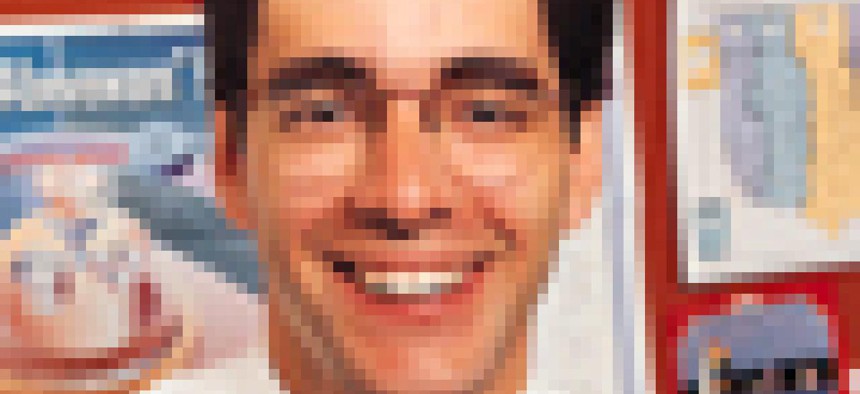MARKET SHARE

Wall Street finally begins to love federal information technology just when the market is expected to slow. In a recent report, Federal Sources Inc. projected federal IT spending of just 0.9 percent in fiscal 2002, below 7.7 percent growth for fiscal 2001.
Wall Street finally begins to love federal information technology just when the market is expected to slow. In a recent report, Federal Sources Inc. projected federal IT spending of just 0.9 percent in fiscal 2002, below 7.7 percent growth for fiscal 2001. All of the growth is expected to come from civilian agencies, with defense agencies expected to show a slight decline. Well-positioned companies will continue to gain market share (or acquire share), given the very large and fragmented nature of the federal IT market. There are several factors that suggest stronger IT spending in the future, and as noted by Federal Sources, actual spending could exceed budgeted amounts as it did last year. Much remains uncertain about defense IT spending, as the Defense Department and the Bush administration review their priorities over the next several months. One of the risks I laid out in our reports on federal IT companies is that the change in administration could cause some near-term disruptions in spending, as the new leaders determine their priorities and plan accordingly. This appears to be the primary reason for the slowdown in IT budgets in 2002. While IT does not now seem to be a direct priority of the Bush administration, it is indirectly, just like in private corporations, as the government seeks to become more efficient at lower cost. Given the administration's past support of outsourcing initiatives and its desire to maintain the U.S. military's technological lead over other nations, together with the progress already made to use more commercial practices and outsourcing in the federal market, I remain confident that the outlook over the next several years is quite positive. The story is a little different on the commercial side. With first quarter 2001 results having been reported, several key trends have become apparent.First, nearly all of the e-business and traditional IT service firms guided earnings estimates lower for the second quarter. The expected sequential decline in revenue for the e-business firms is dramatic in many cases. Even one of the leaders in the space, Sapient Corp., has indicated its second-quarter revenue will be 13 percent to 17 percent sequentially lower. In general the more traditional IT service firms, such as American Management Systems Inc. and KPMG Consulting Inc., are looking for sequentially flat results, implying they are taking market share back from the e-business companies that hurt them over the past few years. The largest outsourcing companies, particularly Electronic Data Systems Corp. and IBM Corp.'s Global Services, are indicating that growth is continuing on plan. Business visibility is first and foremost on investors' minds today; hence, the relative attractiveness of the long-term contracts associated with outsourcing and government IT companies. In the commercial space, outside of outsourcing, business visibility remains low. As evidenced by the flat sequential revenue performance ? or for EDS and IBM-actual growth ? IT spending continues in the commercial sector, though at a much slower pace than historically. I believe we will see a fundamental bottoming in late third quarter 2001 or, more likely at this point, early fourth quarter of 2001, as the economic picture improves and client spending resumes. We do not expect significant revenue acceleration this year, but perhaps a slight increase in fourth quarter 2001 as clients begin planning for projects that will begin in earnest in the first half of 2002. As projects begin to ramp materially in the first half, revenue and earnings should begin to accelerate through the second quarter 2002 and into the second half. So when will the commercial IT stocks move higher? The primary factor for most stocks is an improved economic and spending environment, as evidenced by improved client sentiment and company visibility. We also would look for possible leading indicators, such as enterprise software sales beginning to increase in the third or fourth quarter of 2001. Note that recent federal and European Union cuts in interest rates should also begin to work their way through the economy.

Bill Loomis is managing director of the technology research group at Legg Mason Wood Walker Inc., Baltimore. He can be reached at wrloomis@leggmason.com. Legg Mason Wood Walker Inc. makes a market in the shares of American Management Systems and Sapient. Electronic Data Systems is a Legg Mason Select List core holding. This information is based on sources believed to be reliable but is not guaranteed as to completeness or accuracy and is not intended to be an offer to buy or sell any security.

Bill Loomis
Bill Loomis is managing director of the technology research group at Legg Mason Wood Walker Inc., Baltimore. He can be reached at wrloomis@leggmason.com. Legg Mason Wood Walker Inc. makes a market in the shares of American Management Systems and Sapient. Electronic Data Systems is a Legg Mason Select List core holding. This information is based on sources believed to be reliable but is not guaranteed as to completeness or accuracy and is not intended to be an offer to buy or sell any security.
NEXT STORY: L-3 Communications to Acquire EER Systems

